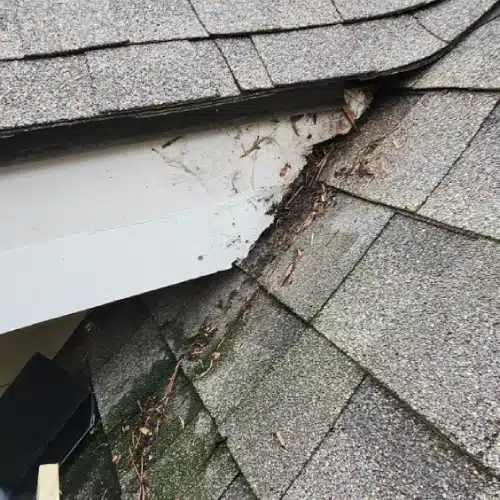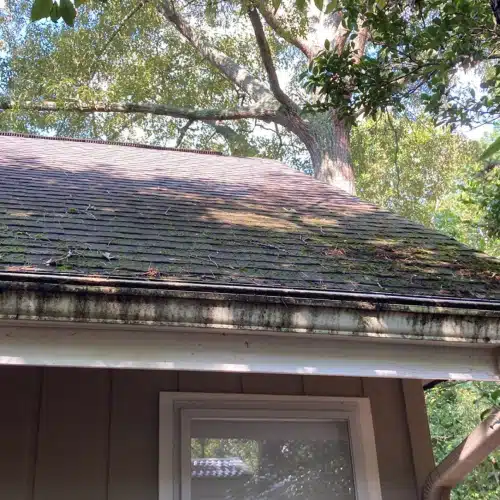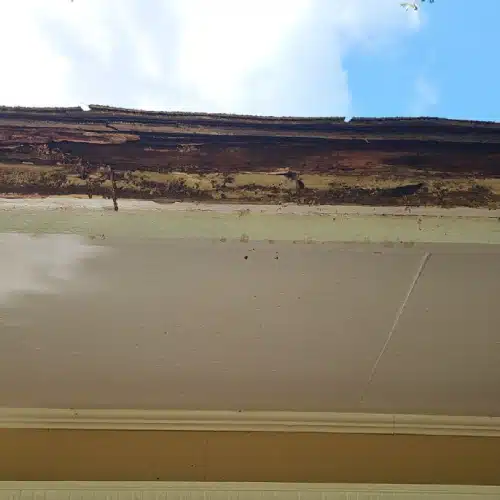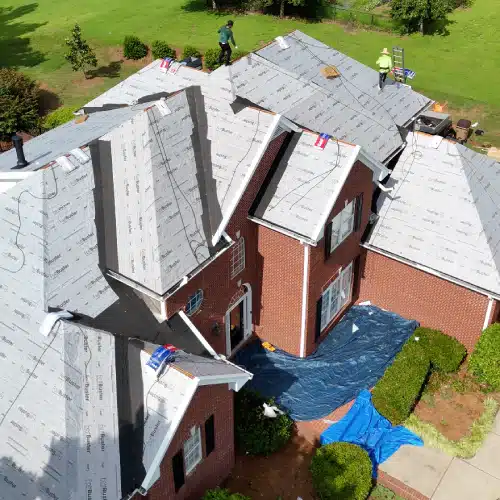The Lifespan of Your Roof Depends on More Than Just Storms
Gainesville homeowners know by now that their roof is the first line of defense for their home. However, roofs can be damaged by much more than just wind and hail—and in many ways, environmental factors like UV exposure, moisture, neglected gutters, and more can do just as much damage. To help homeowners maximize the lifespan of their roof, our team at Skyline Contracting is sharing the key factors to account for.What Is the Lifespan of a Roof?
The average lifespan of a roof depends on several factors, and particularly the material it’s made from:- Asphalt shingles: 15–30 years
- Metal roofing: 40–70 years
- Tile roofing: 50–100 years
- Slate roofing: more than 50 years



How Climate Affects Your Roof Over Time: Silent Stressors
Many environmental factors can cause damage to your roof without a single hailstone. Depending on your local climate and weather patterns, you may face any—or all—of the following:
- UV Exposure – Over time, the sun can damage your roofing, particularly asphalt shingles. UV damage can also affect sealants and glues, degrade protective coatings, and more.
- Heat Exposure – High heat will accelerate the degradation of your roofing system, particularly impacting your roof’s underlayment and any adhesives used on the roof.
- Moisture Problems – Roofs exposed to a lot of rain or high humidity can present issues with moisture damage or intrusion, including rot, mold, mildew, and algae formation.
- Freezing/Winter Weather – We may not get much of a winter here in Gainesville, but even those in milder climates may encounter issues with freezing and thawing on the few days that cold temperatures set in.
Beyond Shingles: Hidden Damage
Your roof is more than just the shingles on its surface. While these bear the brunt of the impact from hail, high winds, and weather-related issues, every part of your roof’s design is important—and less-exposed components could lead to significant roofing issues if they aren’t maintained.
Soffits and fascia boards are a good example of this. Fascia boards run along the edge of your roof line and protect the edges from moisture intrusion, while soffits are installed under the eaves. While they’re less directly exposed than your shingles, fascia and soffit damage is common—and if these components become damaged or rotted, it can leave your roof’s underlayment and decking vulnerable to moisture.
Gutters and Ventilation Play a Bigger Role Than You Think
Other common culprits for roof damage that has nothing to do with storms are your gutters and your roof’s ventilation system.
Both your gutters and roof vents protect your roof and home from moisture, albeit in different ways: your gutters efficiently whisk water off of your roof and away from your home, while your roof vents allow airflow to ensure humidity and hot air don’t damage your roof from inside your home.
When these components of your roof aren’t functioning properly, water and moisture may accumulate where it isn’t supposed to. Broken gutters can result in foundation damage, basement flooding, or rotted fascia boards, as this is often where gutters are attached.
Poor attic ventilation traps hot air and humidity, which raises your attic and roof deck temperatures and increases the likelihood of mold, mildew, and rot in your attic. Proper roof maintenance should account for both of these essential systems.
Protect Your Home with a Roof Inspection
Regular roof inspections will assess your entire roofing system—including not just the shingles, but fascia, gutters, ventilation, and more. This will ensure your home is protected against degradation due to factors like heat, UV exposure, and moisture accumulation.
Ideally, a roof inspection should be scheduled once per year, or any time you notice a problem with your roof.

Check Your Homeowner’s Insurance: Are You Covered?
Another important takeaway for homeowners is to review their insurance policy and understand their coverage. Some policies only cover damage from sudden events (called “perils), meaning issues caused by age, wear and tear, or poor maintenance might not be reimbursed. Make sure to:- Review your policy for roof coverage details
- Ask if preventive roof repairs are covered
- Keep records of inspections and any repairs made
